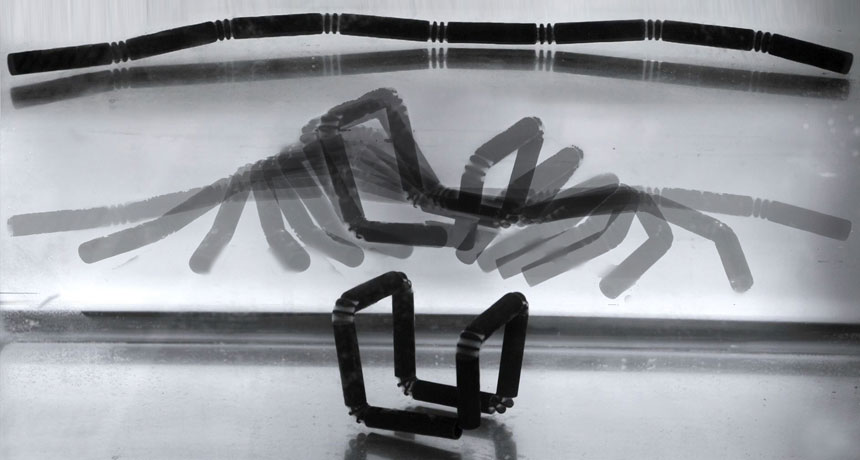Questions for ‘How to print shape shifters’

This black strand (top) folds itself into a box when it's immersed in water. It's an example of 4-D printing, a new technology to print solid objects that interact with the environment.
Self-Assembly Lab/MIT/Stratasys Ltd./Autodesk Inc.